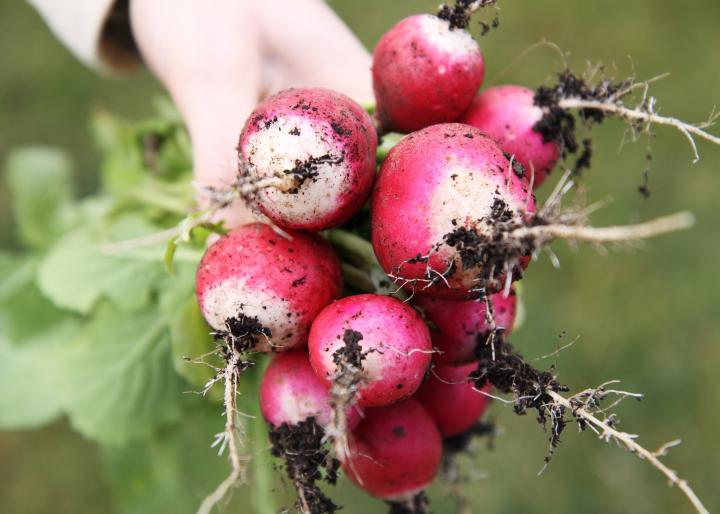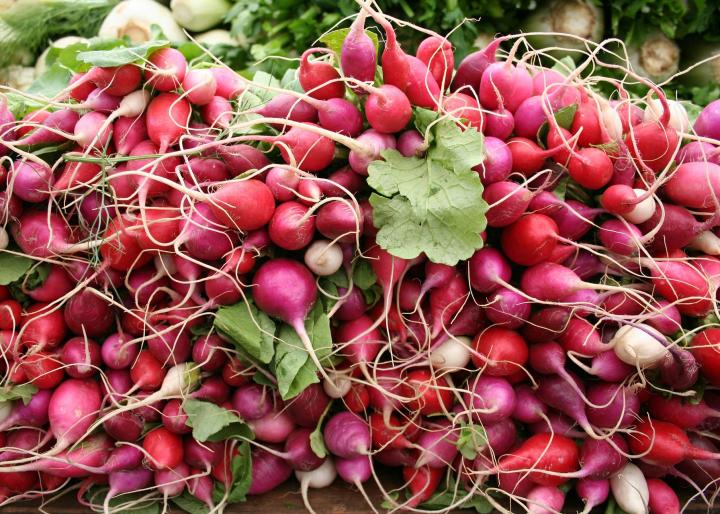
Sign up for our daily newsletter to get gardening tips and advice.
Planting, Growing, and Harvesting Radishes
Many folks do not realize that radishes have uses well beyond the salad garnish! Radishes are great for pickling with carrots or to be fermented into kimchi. The small types can be snacked on whole (with their green tops as handles), or dipped into salted butter and lime. Of course, radishes can also be grated into cabbage slaws to add some flavor.
Radishes can also be cooked. You can roast halved radishes until buttery and tender. And the green tops can be sauteéd in olive oil with some garlic or even made into pesto.
ADVERTISEMENT
I'm confused by the two opposing messages. Planting 3-4 seeds in plugs and then planting them in their groupings into the garden as a whole vs. planting seeds individually, spaced 1 cm apart? help! LOL which is it?
Like many planting instructions, this says to plant 1 inch apart and then thin to 2 inches apart. Why not just plant 2 inches apart to begin with? Is there a reason for this? Do they need to be closer initially? Just curious.
Hi Rob, Good question. Not all seeds germinate. So we plant extra and then see what comes up, thinning to the right spacing so the plants won’t be overcrowded. All, when seeds are tiny, they are hard to handle so sometimes folks scatter the seeds instead of planting one-by-one and then thin.
I’m surprised there’s no mention of cabbage butterflies. Here in San Francisco, cabbage butterflies area big problem for cruciferous vegetables. Their caterpillars destroy the leaves! Bird netting seems to help.
Thanks for sharing your experience! We’ve added info on cabbage worms above.
Same here in Iowa. Had to keep checking for larvae almost everyday. Will be using netting this year!
No luck here…consumed by aphids. However, have successfully grown them in the past. So frustrating!!!
Great starter crop for kids......... Colorful, and fast growing. Along with carrots, you'll teach them all about planting, watering, weeding, and the rewards like eating something you grew yourself. Dad started me out with Batchelor buttons and zinnias for color. Sixty years later I'm still hooked. Thanks Dad!
My radishes will not form bulbs. But they have thick stocks and make the radishes tough and not eatable and are very small.
Radish greens can be eaten in salads or steamed; use the smallest leaves u can find they are more tender;












